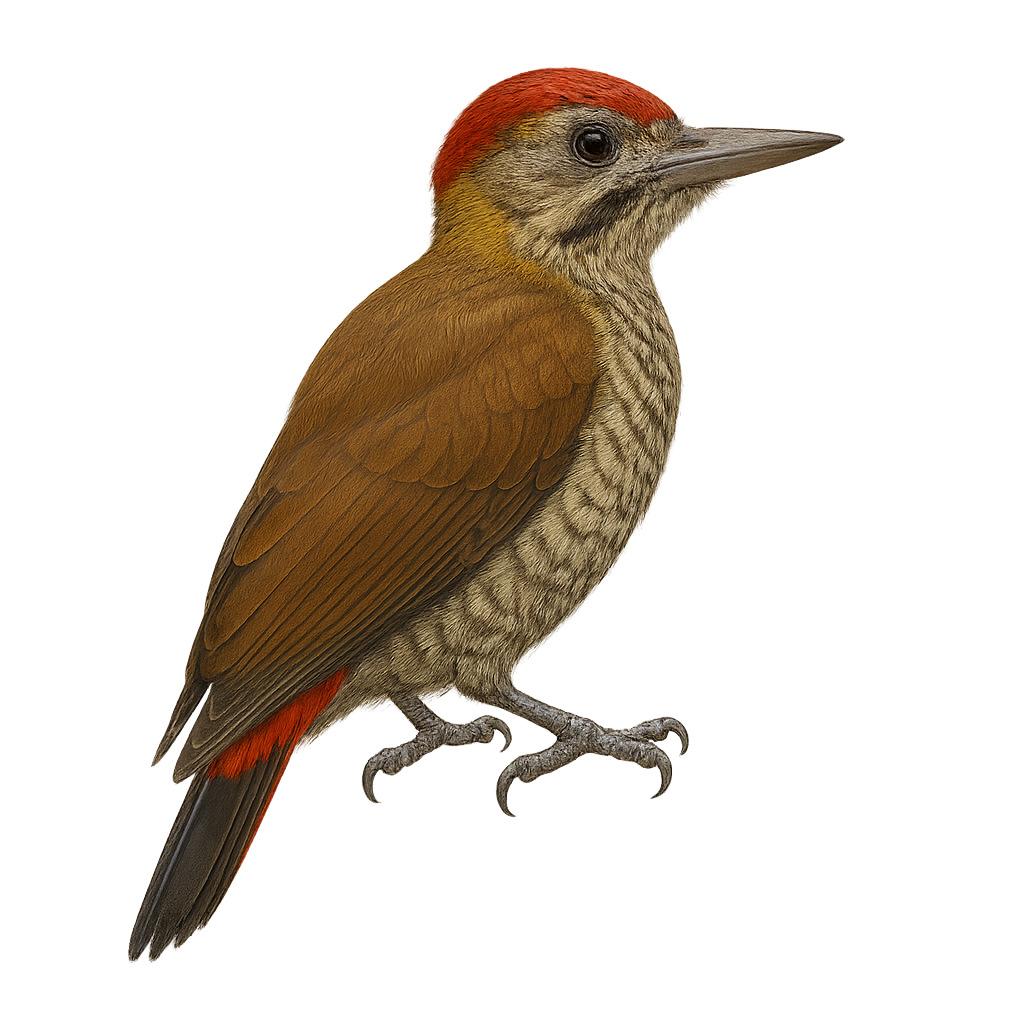Your wildlife photography guide.
Explore the red-stained woodpecker in detail, study its behavior, prepare your shots.
Where to observe and photograph the red-stained woodpecker in the wild
Learn where and when to spot the red-stained woodpecker in the wild, how to identify the species based on distinctive features, and what natural environments it inhabits. The WildlifePhotographer app offers tailored photography tips that reflect the red-stained woodpecker’s behavior, helping you capture better wildlife images. Explore the full species profile for key information including description, habitat, active periods, and approach techniques.
Red-stained Woodpecker
Scientific name: Dryobates kirkii

IUCN Status: Least Concern
Family: PICIDAE
Group: Birds
Sensitivity to human approach: Suspicious
Minimum approach distance: 10 m
Courtship display: March to April
Incubation: 13-15 jours
Hatchings: March to May
Habitat:
Tropical forests, subtropical forests, wooded areas
Activity period :
Primarily active during the day, with peak activity in the morning and late afternoon.
Identification and description:
The Red-stained Woodpecker, or Dryobates kirkii, is a small woodpecker known for its red and brown plumage. It primarily inhabits the tropical and subtropical forests of South America, particularly in Colombia, Venezuela, and Brazil. This woodpecker is recognizable by its reddish head in males, while females have a more subdued cap. It feeds mainly on insects, which it extracts by drumming on tree bark. Although discreet, its drumming is often audible in its natural habitat. It plays a crucial role in the ecosystem by controlling insect populations and creating tree cavities that serve as nests for other species.
Recommended lens:
400 mm – adjust based on distance, desired framing (portrait or habitat), and approach conditions.
Photography tips:
To photograph the Red-stained Woodpecker, it is advisable to use a 400mm lens or longer to capture precise details without disturbing the bird. Look for areas where drumming is audible, as this often indicates the bird's presence. Be patient and discreet, as although suspicious, the Red-stained Woodpecker can be observed when focused on foraging. The best times to photograph it are early in the morning or late in the afternoon, when the light is soft and highlights the colors of its plumage.
The WildlifePhotographer App is coming soon!
Be the first to explore the best nature spots, track rutting seasons, log your observations, and observe more wildlife.
Already 1 431 wildlife lovers subscribed worldwide

